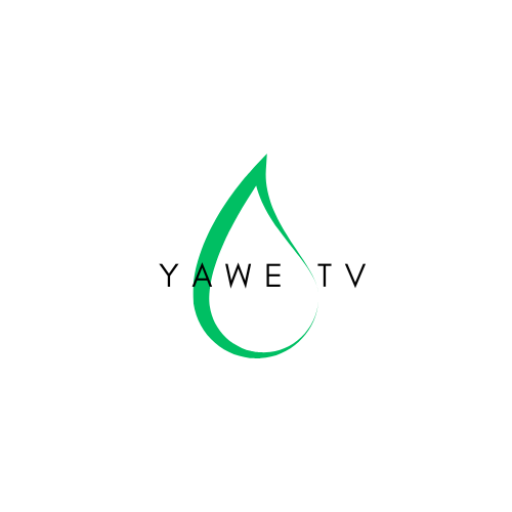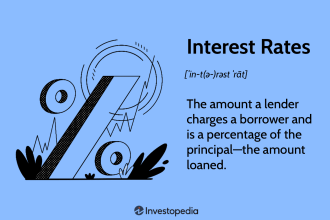Picture this scene: you’ve finally decided to list your property. The sign is up, the online listing is live on Domain Real Estate, and the first open home is buzzing. A potential buyer, pre-approved and ready to act, seems to fall in love. They make a strong offer. You accept, champagne is popped, and you start planning your next move.
Then, the phone rings. It’s your real estate agent. The buyer’s building and pest inspection report has come back, and it’s a laundry list of “urgent,” “major,” and “costly” issues you never knew existed. The buyer is spooked. They’re either pulling out of the deal entirely or demanding a massive price reduction that guts your profit margin.
Your dream sale has just turned into a high-stress, last-minute negotiation nightmare.
This scenario plays out every single day across the Australian real estate landscape, from the bustling streets of Sydney to the sprawling suburbs of Perth. But what if you could flip the script? What if you could walk into negotiations with all the cards in your hand, eliminating surprises and justifying every dollar of your asking price?
Welcome to the world of the pre-listing inspection. This proactive strategy is no longer just a “nice-to-have”; for savvy sellers in today’s complex market, it’s a non-negotiable secret weapon. It’s the single most powerful step you can take to protect your investment, streamline your sale, and ultimately, put more money in your pocket. Whether you’re selling a family home in real estate NSW, an investment unit in Melbourne real estate, or a large commercial space, this guide will show you why a pre-listing inspection is the smartest money you’ll spend on your selling journey.
What Exactly is a Pre-Listing Home Inspection?
A pre-listing inspection—also known as a seller’s inspection—is a comprehensive, independent, third-party examination of a property’s condition before it is listed for sale. It’s the exact same type of detailed inspection a serious buyer would commission, but you, the seller, are the one initiating it.
A qualified inspector will meticulously assess the property from the roof to the foundations, evaluating all major systems and structural components. They will then compile a detailed written report, complete with photographs, outlining the property’s current state, highlighting any existing defects, and identifying potential future issues.
Key Difference: The crucial distinction is control. With a buyer’s inspection, you are on the back foot, reacting to their findings. With a pre-listing inspection, you are on the front foot, armed with knowledge and able to act proactively. This shifts the entire dynamic of the sale in your favour.
The “Why”: Unpacking the Unbeatable Advantages for Sellers
Investing a few hundred dollars in a pre-listing inspection might seem like an unnecessary expense when you’re already thinking about agent commissions and marketing costs. However, viewing it as a cost is the wrong mindset. It’s one of the highest-return investments you can make in the selling process. Here’s why.
1. Gain the Ultimate Upper Hand in Negotiations
Knowledge is power, especially in real estate negotiations. When a buyer’s inspection uncovers a “major defect,” they often use it as leverage to demand a significant price reduction. They might overestimate the cost of repairs, using the shock factor to their advantage.
When you have your own pre-listing report, you neutralize this tactic.
- Full Transparency: You can present the report to potential buyers upfront, showing you have nothing to hide. This builds immediate trust.
- Informed Pricing: You and your real estate agent can price the property accurately from day one, factoring in any known issues. There’s no room for a buyer to claim the price is too high based on a “surprise” defect.
- Fact-Based Discussions: If a buyer’s report flags an issue, you have your own professional assessment to compare it with. You can counter an inflated repair quote with a realistic one you’ve already obtained. The negotiation shifts from an emotional reaction to a factual, business-like discussion.
This is critical in competitive markets like real estate Sydney and real estate Brisbane, where multiple offers are common but can quickly fall apart over inspection clauses.
2. Eliminate Last-Minute Surprises and Deal Collapses
The period between accepting an offer and the contract going unconditional is the most nerve-wracking phase of any sale. This is where most deals collapse, and the number one culprit is a bad building and pest inspection report.
A pre-listing inspection virtually eliminates this risk. You uncover the issues—the leaky shower, the cracked roof tiles, the faulty wiring—long before a buyer ever steps foot on the property. This means no 11th-hour panic, no frantic calls to tradespeople for urgent quotes, and no watching your perfect buyer walk away. Your sale is far more likely to proceed smoothly to settlement, saving you immense stress and potentially months of market time if you have to re-list. Many real estate agents will tell you that a deal that falls through can stigmatize a property, leading to lower offers the second time around.
3. Justify Your Asking Price with Confidence
In a market where buyers are cautious and well-researched, you need to be able to justify your asking price with concrete evidence. A clean pre-listing inspection report is your proof.
Imagine your real estate agent at an open home. When a cautious buyer asks, “What’s the catch? The price seems strong,” your agent can confidently reply, “The pricing reflects the excellent condition of the home. In fact, the sellers have proactively had a full building and pest inspection done, and we’d be happy to share the report with serious buyers.”
This statement instantly positions your property as a premium, transparent, and well-maintained listing. It tells buyers they are not just buying a house; they are buying peace of mind. This is particularly valuable for unique properties, like those found in real estate Margaret River or real estate Kiama, where pricing can be more subjective.
4. Streamline the Selling Process for a Faster Sale
Time is money in real estate. Every extra week your property sits on the market costs you in mortgage payments, council rates, and maintenance. A pre-listing inspection can dramatically shorten your time to “sold.”
- Reduced “Days on Market”: Properties with available inspection reports often sell faster because they attract more serious, committed buyers.
- Fewer Conditional Offers: Buyers may be more willing to make offers with fewer conditions (or waive the inspection condition altogether), leading to a quicker, more secure sale.
- Smoother Closing: With no inspection-related hurdles to overcome, the entire process from offer to settlement is faster and more efficient for everyone involved—you, the buyer, the agents, and the conveyancers.
This efficiency is a huge advantage, especially if you’re trying to coordinate a simultaneous buy-and-sell.
5. Enhance Transparency and Build Buyer Trust
Today’s buyers are more skeptical than ever. They’ve heard horror stories and are terrified of buying a “lemon.” By providing a pre-listing inspection report, you are making a powerful statement of honesty and integrity.
You’re essentially saying, “Here is my home, warts and all. I’ve done my due diligence, and I am being completely transparent about its condition.” This level of openness is disarming and builds a massive amount of goodwill. A buyer who trusts you is more likely to make a strong offer, be reasonable during negotiations, and feel confident about their purchase. This can be the deciding factor that makes them choose your home over a competing property.
6. Opportunity for Proactive Repairs and Upgrades
The report doesn’t just identify problems; it gives you a roadmap for maximizing your home’s value. You now have a choice:
- Repair and Profit: You can fix minor to moderate issues before listing. This is almost always cheaper and less stressful than doing it under the pressure of a contract. A $500 plumbing fix could prevent a buyer from demanding a $5,000 price reduction. This is a core principle of real estate investing: small, strategic inputs for maximum output.
- Disclose and Price Accordingly: For larger, more expensive issues (e.g., a full roof replacement), you may choose not to repair them. Instead, you can get quotes, disclose the issue fully, and adjust the price. This attracts buyers looking for a property they can add value to and prevents the issue from becoming a deal-breaking obstacle later on.
This strategic approach allows you to control the narrative and the costs, rather than having them dictated to you.
The Financial Equation: Is a Pre-Listing Inspection a Cost or an Investment?
Let’s talk numbers. This is where the true power of a pre-listing inspection becomes clear, especially for those focused on real estate investing and maximising returns.
The Upfront Cost: A National Snapshot
The cost of a combined building and pest inspection in Australia typically ranges from $400 to $1,000. The exact price depends on the size, age, and location of your property. For example, a large home in real estate Victoria might be at the higher end, while a small unit in real estate Adelaide could be less. This is a small fraction of the potential costs it helps you avoid.
Source: You can find licensed inspectors and get quotes through bodies like the Housing Industry Association (HIA) or Master Builders Australia. Many independent firms also list their pricing online.
Calculating the ROI: How a Small Spend Prevents Major Losses
Consider this realistic scenario for a property with an asking price of $850,000:
Scenario A: NO Pre-Listing Inspection
- You list the property for sale at $850,000.
- You accept an offer for $845,000, subject to inspection.
- The buyer’s inspector finds moderate roof damage and evidence of termite activity (which you were unaware of).
- The buyer, now nervous, gets a quick, inflated quote for repairs totalling $25,000.
- They come back and demand a $25,000 price reduction, or they will walk away.
- Under pressure, you agree to drop the price to $820,000 to save the deal.
- Net Result: You lost $25,000 from your expected sale price.
Scenario B: WITH a Pre-Listing Inspection (Cost: $600)
- You pay $600 for a pre-listing inspection.
- The report identifies the same roof and termite issues.
- You have time to get three competitive quotes. The most reasonable quote to fix everything properly is $12,000.
- You complete the repairs before listing. You also get a warranty for the work.
- You confidently list the property for sale at $850,000, disclosing the past issue and providing documentation of the professional repairs.
- The buyer’s own inspection confirms the repairs are solid. They feel confident and make a full-price offer.
- Net Result: Your total outlay was 12,600(12,600(12k for repairs + $600 for inspection). You sold for the full $850,000.
The Difference: In this common scenario, the pre-listing inspection directly saved you $12,400. The ROI on your $600 inspection fee is a staggering 2,066%. This isn’t an exaggeration; this is how the sold real estate market works every day.
A Deep Dive: What’s Covered in a Comprehensive Pre-Listing Inspection Report?
A quality inspection report is a highly detailed document. It’s not just a pass/fail checklist. A professional inspector, like those sought after by top firms such as Ray White Real Estate or Elders Real Estate, will examine and report on hundreds of items. Here’s a breakdown of the key areas.
Structural Integrity
This is the skeleton of your home and the most critical area of inspection.
- Foundations: Cracks, settlement, subsidence, and drainage issues.
- Walls (Internal & External): Structural cracks, bowing, dampness, and condition of cladding or brickwork.
- Roofing: Condition of tiles/metal sheeting, flashing, gutters, downpipes, and evidence of leaks.
- Roof Space: Frame integrity, insulation, ventilation, and signs of water penetration or pests.
- Sub-floor Space: Condition of stumps/piers, ventilation, drainage, and dampness.
The “Big Ticket” Systems
These are the expensive systems that buyers worry about most.
- Electrical: Visual check of the switchboard, wiring type, safety switches (RCDs), and power points. (Note: This is not a full electrician’s audit but a visual inspection for defects).
- Plumbing: Visible pipes, taps, toilets, showers, hot water system, and drainage. They’ll check for leaks, water pressure issues, and corrosion.
- HVAC: Heating, ventilation, and air conditioning systems are tested for basic functionality.
Exterior and Interior Elements
- Exterior: Fences, retaining walls, paths, driveways, sheds, patios, and decks. They’ll look for structural soundness, decay, and safety issues.
- Interior: Condition of floors, walls, ceilings, windows, and doors. They’ll check for moisture, sagging ceilings, and operational faults.
- Wet Areas: Bathrooms, laundry, and kitchen are meticulously checked for leaks, damaged grout/sealant, and ventilation. Leaky showers are a very common and costly defect.
Pests and Termites
This is absolutely crucial in Australia and a deal-breaker for many buyers.
- Termite Activity: The inspector will look for evidence of current or past termite activity, as well as any previous termite treatments.
- Termite Damage: Assessment of any visible damage to timber elements.
- Conducive Conditions: They will identify conditions around the property that might attract termites, such as wood piles against the house, poor drainage, or leaking pipes. This is vital for properties on the Gold Coast real estate market or in humid parts of real estate QLD.
- Other Pests: Evidence of wood borers or significant fungal decay (wood rot).
Safety Hazards
Inspectors are trained to identify potential safety risks.
- Asbestos: Identifying materials that are likely to contain asbestos.
- Balustrades & Stairs: Ensuring they are safe and meet basic standards.
- Safety Glass: Checking that glass in high-risk areas (like doors) is safety glass.
- Pool Fencing: A visual inspection to ensure the pool fence appears compliant (though a separate pool safety certificate is often required by law).
The Strategic Advantage in Different Australian Markets
The value of a pre-listing inspection isn’t uniform; its strategic importance can vary depending on the specific market dynamics of your location.
In Competitive Hubs: Sydney Real Estate & Melbourne Real Estate

In fast-paced, high-value markets, buyers need to act decisively. Providing an inspection report removes a major hurdle, making your property more attractive to those who want to make a quick, clean offer. It helps you stand out from the dozens of other listings and can be the key to sparking a bidding war, as confident buyers are more likely to bid aggressively.
For Growth Corridors: Real Estate Brisbane & Perth Real Estate
In markets experiencing significant growth or transition, there can be a mix of new and old housing stock. For sellers of older homes in suburbs around Perth or Brisbane, a pre-listing report can reassure buyers who might be wary of hidden issues. It demonstrates that your older home has been well-maintained, putting it on a more even footing with newer builds. For those in the real estate rentals market looking to sell a tenanted property, an inspection can be crucial for assessing the condition without constantly disturbing the tenant.
Regional Powerhouses: From Real Estate Kiama to Real Estate Margaret River
In regional towns and lifestyle destinations, buyers often come from out of the area. They may not have a network of local inspectors and are operating on tight schedules. Providing a comprehensive report from a reputable local inspector (like one recommended by Holdsworth Real Estate or Kevin Hicks Real Estate) is a massive convenience that can seal the deal. It shows you understand the needs of a remote buyer and makes the entire process easier for them.
The Investor’s Lens: Commercial Real Estate Perth and Beyond
For sellers of commercial property, the stakes are even higher. A pre-listing inspection (often called a “vendor’s due diligence report” in this context) is practically essential. Commercial real estate buyers are purely focused on numbers and risk. The report allows them to accurately factor in any future capital expenditure, assess the building’s compliance, and secure financing more easily. Whether it’s an office in Swan View or a retail space in Halls Head Real Estate, a pre-listing report demonstrates professionalism and accelerates the transaction.
The “Live” Market Pulse: Real-Time Data and Trends
To make the best decision, it’s vital to understand the current market sentiment. While the core benefits of a pre-listing inspection are timeless, their impact can be magnified by today’s conditions.
As of late 2023 / early 2024:
- Buyer Caution: With higher interest rates, buyers are more cautious and risk-averse. They are scrutinizing every aspect of a purchase. A transparent, pre-inspected property is a beacon of safety in a sea of uncertainty.
- Emphasis on Quality: There’s a noticeable “flight to quality.” Buyers are willing to pay a premium for properties that are move-in ready and have no hidden problems. Your inspection report is the ultimate proof of quality.
- The “Real Estate News” Cycle: Headlines often focus on market shifts, creating anxiety. You can counter this by creating your own positive news story: a home that is professionally vetted and ready for a seamless sale.
Live Daily Information Sources:
For up-to-the-minute data on your local market, including auction clearance rates, median house prices, and days on market, these sources are invaluable:
- Domain Real Estate News & Research: https://www.domain.com.au/news/
- Realestate.com.au (REA) News and Insights: https://www.realestate.com.au/news/
- CoreLogic Australia Property Market Research: https://www.corelogic.com.au/news-research
Consulting these resources will help you and your real estate agent understand exactly how to position your pre-inspected property for maximum impact in the current climate.
Your Action Plan: How to Arrange a Pre-Listing Inspection
Convinced? Here’s your simple, three-step plan to get it done.
Step 1: Finding a Qualified and Independent Inspector
This is the most important step. Do not just go for the cheapest option.
- Check Credentials: Ensure they are fully licensed and insured. Different states have different requirements (e.g., in real estate NSW, they may need a builder’s license).
- Seek Independence: Do not use an inspector referred by a buyer’s agent. Use a truly independent firm to ensure an unbiased report. Your own selling agent may have a list of trusted, reputable professionals they have worked with.
- Read Reviews: Look for online reviews and testimonials. A good inspector will have a long track record of detailed, thorough reports.
- Ask for a Sample Report: This allows you to see the level of detail they provide. A good report is often 40+ pages long with photos and clear explanations.
Step 2: Preparing Your Property for the Inspection
To get the most accurate report, you need to provide the inspector with clear access.
- Declutter: Make sure they can easily get to all areas, especially the sub-floor access hatch, the manhole for the roof space, and the electrical switchboard.
- Unlock Everything: Ensure all rooms, sheds, and gates are unlocked.
- Keep Pets Secured: Keep your pets safely out of the way for the duration of the inspection (which usually takes 2-3 hours).
- Leave Utilities On: The inspector will need to test lights, taps, and appliances, so make sure the power and water are connected.
Step 3: Understanding and Acting on the Report
Once you receive the report, sit down with your real estate agent to formulate a strategy.
- Triage the Issues: Categorize the items into three groups:
- Minor/Cosmetic: Things you can easily fix yourself (e.g., a dripping tap, a sticky door).
- Moderate Defects: Issues that require a professional but are relatively affordable (e.g., repairing a section of guttering, re-sealing a shower).
- Major Defects: Significant, expensive problems (e.g., structural issues, active termites).
- Get Quotes: For any moderate or major defects, get at least two or three written quotes from licensed tradespeople.
- Decide on a Course of Action: Based on the issue, the cost, and your agent’s advice, decide whether to Repair, Replace, or Disclose and Price Accordingly.
Frequently Asked Questions (FAQ)
Q: Do I legally have to show the report to buyers?
A: In Australia, vendor disclosure laws vary by state. However, the strategy is to use the report proactively. You are commissioning it to build trust, so making it available to serious buyers is the entire point. Your agent can manage this process. Be aware that once you are aware of a major defect, you may have a legal obligation to disclose it, whether you have a report or not.
Q: What if the report finds a huge, expensive problem?
A: This is actually a best-case scenario compared to the alternative. It’s far better for you to discover it now than for a buyer to find it later. Finding it now gives you control. You have time to research the issue, get accurate quotes, and build the solution into your pricing and marketing strategy.
Q: Is a pre-listing inspection different for a strata unit versus a freestanding house?
A: Yes. For a freestanding house, the inspection covers the entire property. For a strata property (like a unit or townhouse), the inspection focuses on the interior of your specific lot. A separate “strata report” or “records inspection” is needed to assess the condition of the entire building (common property) and the financial health of the owners’ corporation. Doing both gives a complete picture.
Q: How long is the inspection report considered valid?
A: Most reports are considered current for about 30-90 days. If your property is on the market for longer, a buyer may still wish to get their own updated report, but your initial report will have already done its job of setting a transparent and professional tone for the campaign.
The Final Verdict – Your Path to a Flawless Sale
In the high-stakes game of Australian real estate, you can’t afford to leave things to chance. Hoping for the best is not a strategy. The pre-listing inspection is your definitive move to take control, mitigate risk, and maximize your financial outcome.
It transforms you from a reactive seller, vulnerable to the findings of others, into a proactive, informed, and confident market participant. It’s the difference between a stressful, uncertain journey and a smooth, predictable, and ultimately more profitable sale.
Before you call the real estate photography team, before you approve the marketing copy, and before the first buyer walks through your door, make the smartest investment in your selling journey. Commission a pre-listing inspection. It is, without a doubt, the seller’s ultimate secret weapon.











